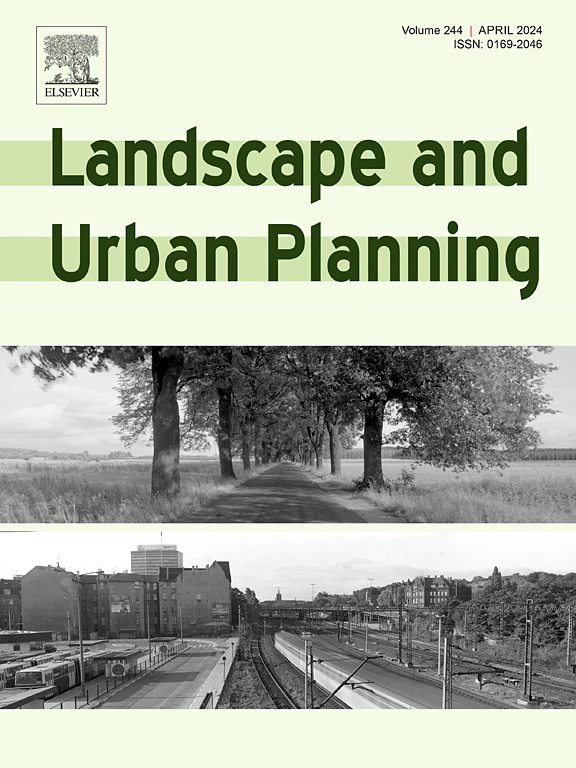Aquatic and terrestrial environmental DNA signals reveal decoupling of blue-green communities along an urbanization gradient
IF 9.2
1区 环境科学与生态学
Q1 ECOLOGY
引用次数: 0
Abstract
Urban blue and green spaces, like ponds and parks, can mitigate the negative effects of urbanization on biodiversity by providing diverse, connected habitats and enabling resource flows between ecosystems. While studies have evaluated these spaces for terrestrial and aquatic communities individually, few have examined shared factors influencing both communities simultaneously. Consequently, it is unclear how these spaces should be conceived and maintained to support the diversity of both aquatic and terrestrial species, as well as their interactions. Here, we use environmental DNA (eDNA) metabarcoding to identify shared drivers and assess if and how aquatic and terrestrial invertebrate communities are coupled across 54 paired aquatic and terrestrial habitats along an urbanization gradient in the city of Zurich, Switzerland. Contrary to general expectations, we find no significant correlation in aquatic and terrestrial community structure, which we attribute to distinct drivers identified for both communities. Aquatic communities were primarily influenced by local factors related to habitat quality, while terrestrial communities were associated to landscape drivers pertaining to habitat quantity, suggesting that different processes at different spatial scales need to be considered to support both communities. Furthermore, with increasing urbanization, aquatic and terrestrial communities exhibited signs of decoupling driven by the filtering of organisms straddling ecosystem boundaries. We conclude that increasing levels of urbanization weaken resource flow between aquatic and terrestrial environments. By employing eDNA across ecosystem boundaries, our study highlights the critical importance of both the quality and quantity of urban habitats in conserving aquatic and terrestrial communities, as well as their linkages.

水生和陆地环境DNA信号揭示了蓝绿色群落沿着城市化梯度的解耦
城市蓝色和绿色空间,如池塘和公园,可以通过提供多样化、互联的栖息地和促进生态系统之间的资源流动,减轻城市化对生物多样性的负面影响。虽然研究分别评估了陆地和水生群落的这些空间,但很少有研究同时审查影响这两个群落的共同因素。因此,目前还不清楚这些空间应该如何构思和维护,以支持水生和陆生物种的多样性,以及它们之间的相互作用。在这里,我们使用环境DNA (eDNA)元条形码来识别共享驱动因素,并评估在瑞士苏黎世市沿着城市化梯度的54对水生和陆地栖息地中水生和陆地无脊椎动物群落是否以及如何耦合。与一般预期相反,我们发现水生和陆地群落结构没有显着相关性,我们将其归因于两个群落确定的不同驱动因素。水生群落主要受与生境质量相关的局地因子的影响,而陆生群落则受与生境数量相关的景观驱动因素的影响,这表明需要考虑不同空间尺度上的不同过程来支持这两种群落。此外,随着城市化进程的加快,在跨生态系统边界生物过滤的驱动下,水生和陆地群落呈现出分离的迹象。我们的结论是,城市化水平的提高削弱了水生和陆地环境之间的资源流动。通过采用跨生态系统边界的eDNA,我们的研究强调了城市栖息地的质量和数量在保护水生和陆地群落及其联系方面的至关重要性。
本文章由计算机程序翻译,如有差异,请以英文原文为准。
求助全文
约1分钟内获得全文
求助全文
来源期刊

Landscape and Urban Planning
环境科学-生态学
CiteScore
15.20
自引率
6.60%
发文量
232
审稿时长
6 months
期刊介绍:
Landscape and Urban Planning is an international journal that aims to enhance our understanding of landscapes and promote sustainable solutions for landscape change. The journal focuses on landscapes as complex social-ecological systems that encompass various spatial and temporal dimensions. These landscapes possess aesthetic, natural, and cultural qualities that are valued by individuals in different ways, leading to actions that alter the landscape. With increasing urbanization and the need for ecological and cultural sensitivity at various scales, a multidisciplinary approach is necessary to comprehend and align social and ecological values for landscape sustainability. The journal believes that combining landscape science with planning and design can yield positive outcomes for both people and nature.
 求助内容:
求助内容: 应助结果提醒方式:
应助结果提醒方式:


